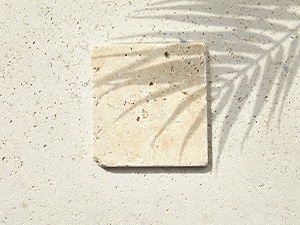What’s Up with the Holes in Travertine?
Travertine, a natural stone admired for its unique beauty and versatile applications, is a popular choice for flooring, countertops, and decorative elements. One of its most distinctive features is the presence of holes and voids throughout its structure. These imperfections, while adding to the stone’s charm, often raise questions among property owners and builders alike. What causes these holes in travertine? Are they a sign of poor quality or simply a natural characteristic of the stone? And, what can be done about them if a smoother surface is desired?
Nature’s Handiwork
First off, travertine is a type of limestone that forms around hot springs and rivers. When the water is packed with minerals like calcium carbonate, it deposits layers that eventually harden into stone. But it’s not just a smooth process; nature likes to mix things up a bit. As the water bubbles up, it releases gases like carbon dioxide. These gases create bubbles and voids in the stone, kind of like how Swiss cheese gets its holes. Over time, these pockets become the characteristic holes you see in travertine.
The Role of Water
Water doesn’t just create travertine; it also sculpts it. As water moves through the stone, it dissolves some minerals and leaves behind others. This ongoing process can create more voids and enlarge existing ones. It’s like a natural artist working over centuries to craft a unique piece.
Erosion and Wear
Even after travertine is formed and quarried, the stone continues to evolve. Rainwater and environmental elements can erode the surface, sometimes making the holes more pronounced. So, when you see those pits and pockets, you’re actually looking at a record of the stone’s journey from a mineral-rich spring to your kitchen floor or bathroom wall.
Why Do We Love It?
You might wonder why we even use a stone that has so many holes. The answer is simple: it looks amazing. The natural texture and character of travertine bring a rustic, earthy feel to any space. Those holes are part of its charm, making each piece truly one-of-a-kind.
Filling the Gaps
Of course, not everyone loves the rough texture, especially in places like kitchens or bathrooms where a smooth surface is more practical. That’s where travertine’s versatility comes in. We can fill those holes with a matching material, giving you a smoother finish while still keeping the stone’s unique look.
We use filler tinted to match the rest of the surface, blending the repair site with the surrounding area. The stone industry term for this service is “floating.” To achieve a uniform finish, we hone and polish once the filler is completely dry.
A Bit of Maintenance
If you choose to leave the holes exposed, just remember that travertine might need a bit of extra care. Dirt and debris can get trapped in those pockets, so regular cleaning and sealing are essential to keep your stone looking great.
Wrapping It Up
So, there you have it. The natural holes in travertine are a result of its formation process, with gases and water working together to create its distinctive look. Whether you have them filled or embrace the natural texture, those holes are what make travertine a timeless, beautiful choice for any space.
